The Rollei 35SE is a beautiful camera, I don’t think there is any doubting that. But for anyone lured by its charming looks, there are no shortage of concerns and caveats spoken about its usability to counteract that lure. I was given mine, and like many gifts it was a surprise; I didn’t choose it. To sound wholly ungrateful for a moment, for various personal preferences I might not have chosen it either. So now I own it, and have got to grips with it, should I have listened to my personal preferences, or should I have allowed myself to get sucked in by those good looks sooner?
I actually have two Rollei 35 cameras, the B35 and the 35SE. The focus of this review will be the 35SE, though I have no doubt that I will come back to the B35 at a later date. As I have mentioned elsewhere, both these cameras were gifted to me by a chap named Ray; a reader of this website. His action that went on to inspire me to give away a Leica iiic. To readdress the lack of gratitude in my leading paragraph, I’d like to add once again that I am of course very grateful, and I sincerely hope my subsequent actions go some way to reflect that. Thanks again Ray!
I’ve actually used a Rollei 35S before, though this was some years ago and not in anger. It was leant to me by a customer when I worked in a camera shop. I’d been aware of them when he leant it to me, it had a dent on the top, and I remember thinking what I had read about them denting easily must be true. The one I now have has a minor dent in it too, so I suspect they are indeed quite easy to dent. Mine is otherwise perfect, and certainly doesn’t look mistreated. Regardless of the dent and the short period of time I spent with the loaned camera, I was left wanting one. I’ve looked a lot of times over the years, but for one reason or another, something else has made it up the priority list.
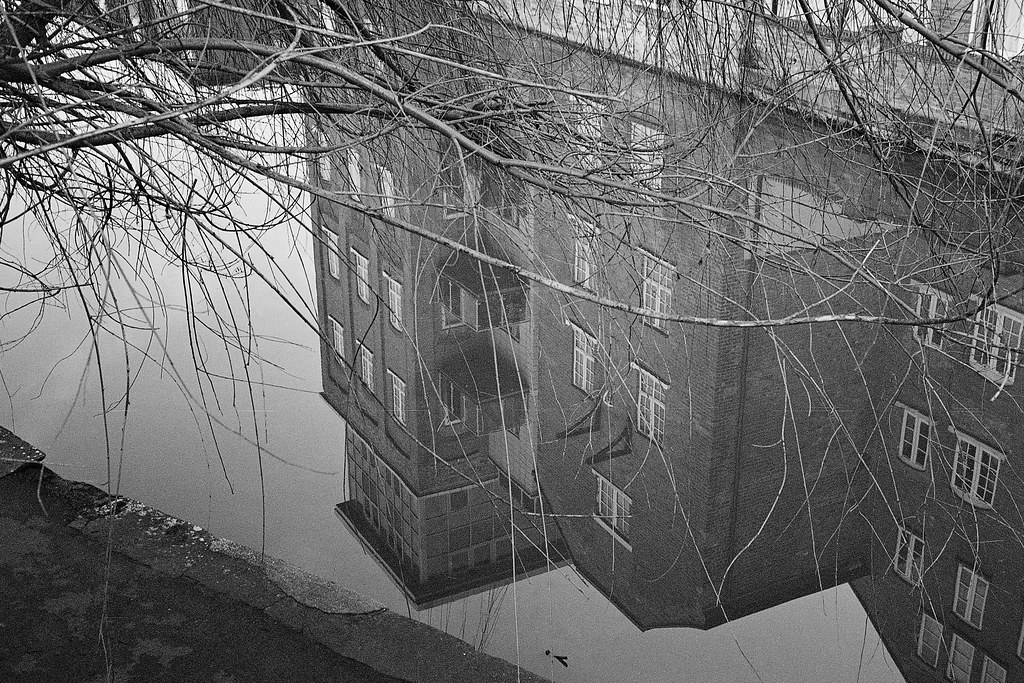
I suspect, ultimately, my penchant for some level of automation may have gotten in the way of the buying process. Since I’ve been shooting 35mm compact cameras I’ve been motivated by cameras that in one way or another aid the process. This might be via entire automation in the case of the likes of an Oly AF-10. Or with my Leica M3/M4-P this might just be through the aid of a rangefinder (not technically automation I know, but I hope you get the point – it is something that makes photography easier). Of course, the Rollei 35SE does have a light meter, but outside of that meter there is very little to help you on your way. Aperture is manual, shutter is manual, focusing is guess work via zone, and that’s about your lot.
Is the Rollei 35SE a fiddly camera to use?
One of the most oft-repeated caveats of the Rollei 35 is that it is fiddly to use. In many respects, it’s hard not to agree with this sentiment, the controls are quite small and in the unusual position on the front face of the camera. But, at the same time, I somewhat feel the need to defend it. Not because it’s not a little fiddly, but more for how I’ve found that fiddliness to be easily overcome, or perhaps more accurately, somewhat irrelevant for what I think is the designed shooting style. The design of the camera is certainly interesting, and definitely outside of convention, but actually it’s not that hard to get to grips with. It’s not as though the concepts are different, it’s still just shutter speed and aperture. What has potential to make the camera a fiddle to use is when and how frequently those controls need to be changed.
Before I get to the process of changing of the camera settings, I just have a quick comment on the action. Many seem to argue the setting can’t easily be adjusted at eye level. I’ve found, that actually they can – or even must – be adjusted at eye level. Some of the other models of Rollei 35 have meters on the top. Not the 35SE, its meter is a 3 LED type meter in the viewfinder. To get an accurate reading quickly you have to be looking through the finder to see the meter as you change the settings. With the camera to the eye though, the settings aren’t visible, they are only visible when looking at the front of the camera from over the top edge. Sounds awkward? Actually, in practice I found it quite quick to get used to …
The Rollei 35SE – How to shoot a (fiddly?) zone focus camera
Shooting this camera with ease is all about the method with which it is shot. As I mentioned a moment ago, it is only fiddly if you are constantly changing the aperture and shutter speed for every shot. This is a zone focus camera though, and the idea with zone focus cameras is that – to a greater extent – the settings are preset, rather than set per shot.
This is going to sound very basic, especially to those who well versed in this stuff, but bear with me, there is a point to explaining this. When I go out shooting with the Rollei 35SE, I go out with a little more consideration and intent. So, firstly I’ve been making a decision about the aperture I want to shoot at before I even leave the house to take photos. In this wintery weather (we were having when I started this post) f/11 has been key to the equation. I know the weather is crap so I know to set the shutter to 1/125th before I even look out of the window. I shoot 400iso XP2, and know that 400iso, 1/125th and f/11 (EV12 @100iso) is about right for overcast/dull winter weather. This might not be the right setting for the day, but pre-setting it to these settings firstly gets me in the frame of mind for shooting a fully manual zone focus camera, and secondly it gives me a near-right starting point.
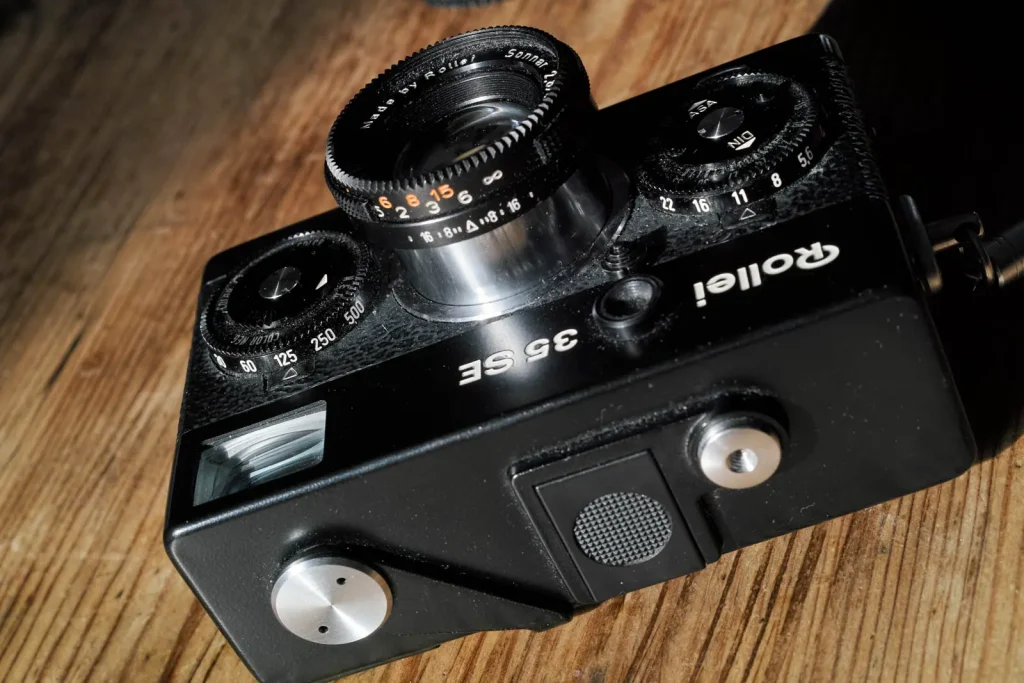
So, assuming I get outside and it’s brighter or more dull. I have 2 stop from 1/125 to 1/500 and 2 stops from 1/125 to 1/30 to deal with those circumstances before I hit a preferential or mechanical shutter speed limit respectively. This 4EV window also covers a good deal of outdoor shooting circumstances. Since I am also blessed with the ability to count to 4, with the camera to my eye I can rotate the shutter speed dial, counting the clicks to a shutter speed that is within my comfortable shooting range. For each shot I take a quick glance at the top of the shutter speed dial to remind my of my shutter speed starting point left from the last shot, and count the clicks from there if it is necessary to change. When the weather changes for the better I will likely adjust my starting aperture to f/16, or maybe just use slower film. I don’t often need to change the aperture when shooting as I’m happy at f/11 when shooting in daylight. Usefully, the later Rollei 35SE that I have has a little lock on the aperture dial, so I can preset and forget that entirely.
As for focusing, that was set before I left the house too. And whilst the focus doesn’t lock, the focusing is deliberately stiff – not stiff broken-stiff – just stiff like it has been designed not to be knocked out of place. Zone focusing is also much more of a process to be done prior to shooting, rather than prior to each shot. With f/11 set to around 5-6m the 40mm lens will give me me somewhere around 2-3m – just under infinity in focus, which is fine for a large portion of the sort of outdoor shooting I do. Everything near-infinity is still going to be in focus for the sorts of size image I’d ever like to appreciate too. And anyway, I’m not convinced I need “infinity” perfectly in focus most of the time, but that’s a subject of another post. If I want something closer to me than 2m to be in focus, I’ll focus per shot, but I’ve quickly gotten into the habit of reverting the camera to around 5-6m.
I know what your thinking, this isn’t a system, this is just shooting with a fully manual camera with a built in light meter in easy daylight shooting situations with faster film so as to have broad depth of field for easy focusing. It’s nothing more than a little bit of consideration to shooting prior to doing it, followed by basically snapping with little consideration to anything but shutter speed and framing. But that’s my point. This camera is a little fiddly, but only if you need to fiddle with it all the time, if you set it up right for your shoot, it’s only the shutter speed dial that needs operating, and that can be done with ease as I have described.
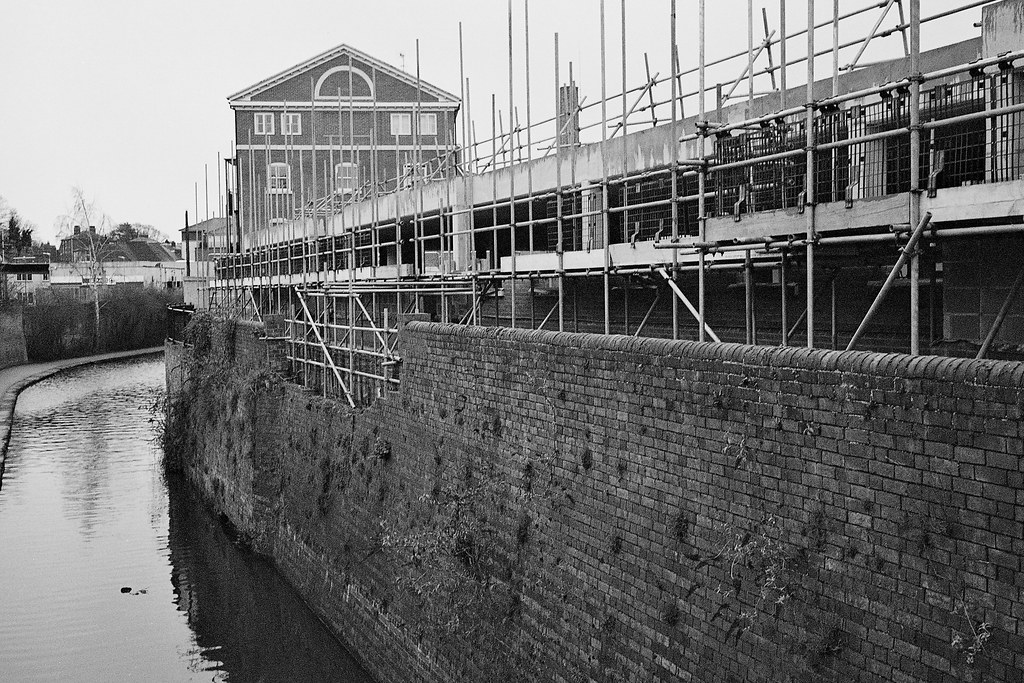
The locking aperture
I skimmed over the fact that – on my camera a least – the aperture locks. On the face of it, this might seem like an odd design decision. Why have a locking aperture, surly this is a setting that should be easy to change without having to fiddle with a little lock every shot? I thought this when I first got the camera, but then I realised it actually represents a clue to the thought process behind the design of the camera. If the aperture locks, there must be a reason. That reason is, it seems to me, that for most shooting it’s intended to be set and forgot, or at very least preset. Having a lock means it can be forgotten, as it can’t get nudged.
So what about when the aperture does need adjusting
Of course sometimes even in the outdoors that 4ev window might not quite be enough and the aperture might need opening up a bit, and the focus might need changing a little accordingly, but the point I hope I’m getting across is one of a mentality of shooting. A mentality of preparation and thought rather than one of leaving all the setting to the last moment. Walking toward Worcester cathedral the other day – a somewhat large building I fancied a shot or two in the shadow of – I opened up the aperture to f/8 before I’d even thought about the shot.
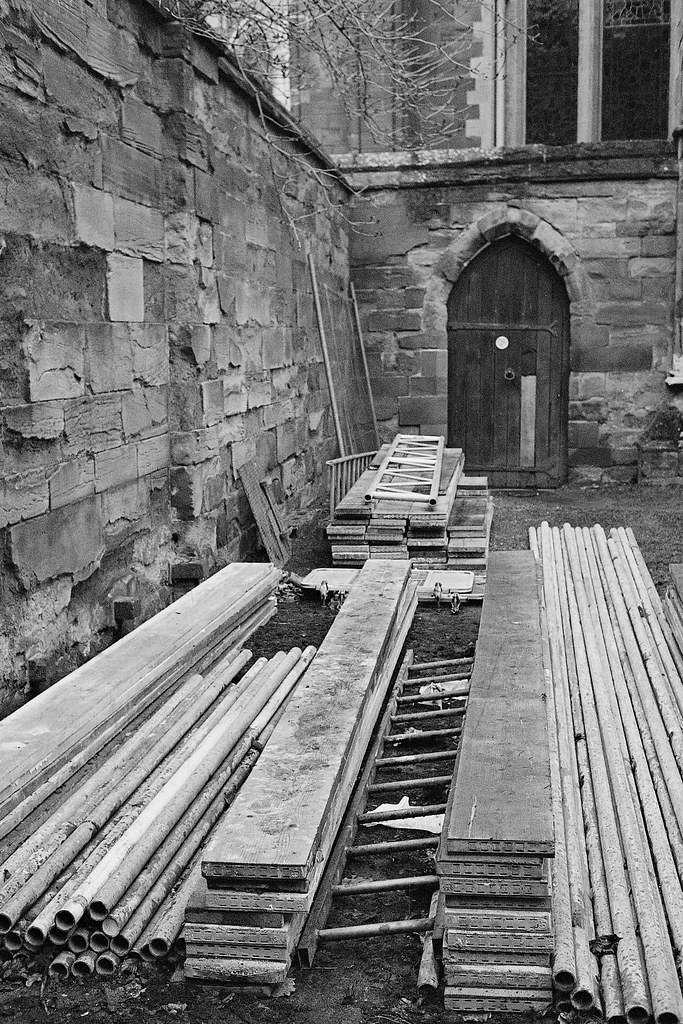
Another example is when I went for a day trip to Birmingham with the wife. As I was walking toward the Bullring I changed the settings on the camera to prepare for the light inside. As I walked through the door I checked them before I even started looking for photos. Then when I did find a shot, I was a lot closer to being ready to shoot. Then as we were walking toward the door to leave I reset them for daylight.
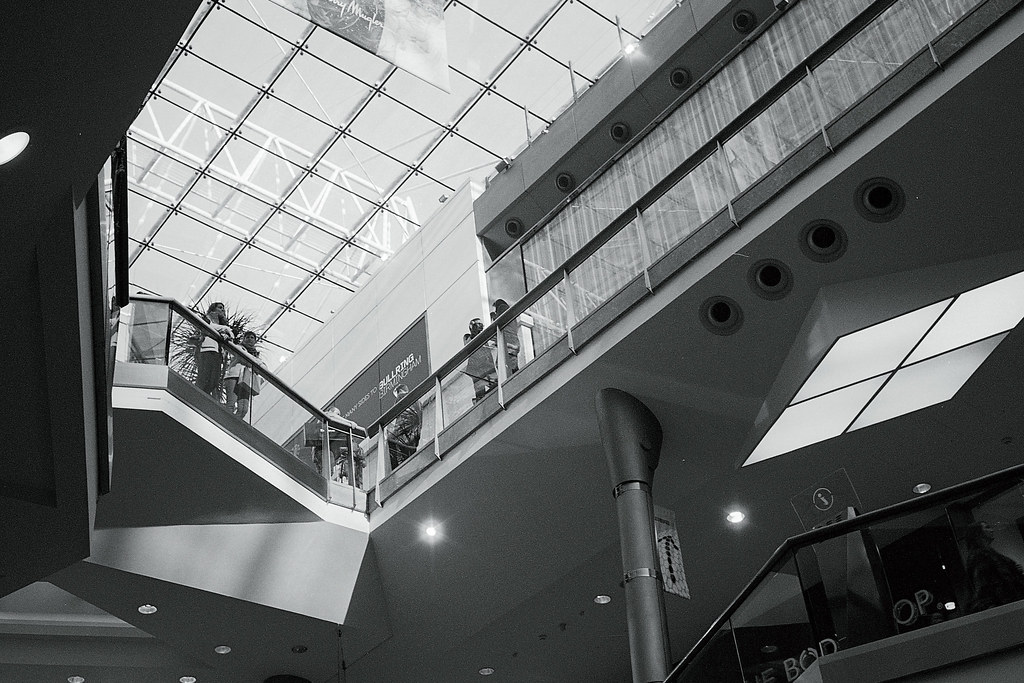
Photographing people
So what about people, indoors with less ideal light in closer proximity. Well, firstly, to me it’s clear that this camera is less suited to these sorts of shooting situations. If you are a big shooter of people indoors then this might not be the best option for you. It is a zone focus camera after all… Maybe think about something with a rangefinder, or autofocus?
That said though, for those occasions when a Rollei 35SE is all you have to hand, it does have a little trick up its sleeve. The aperture dial is un-clicked when unlocked. Shooting people indoors in lower light in closer proximity with a zone focus camera is going to be easier with the smallest aperture you can possibly get away. The Rollei 35SE has a little trick is allowing this with ease. First I set the shutter to the lowest speed I’m comfortable shooting people at. This is 1/60th. I now unlock the aperture, I do my best distance-guessing and focus to that distance. I point the camera at the subject, and with the camera to my eye rotate the un-clicked aperture going from smaller to bigger apertures until the green led for correct exposure just lights up, and then I take the photo. In doing this, I have the shutter speed I want, but I also have the smallest possible aperture. If a clicked aperture gave me perfect exposure at f/2.8, an un-clicked one might give me that at f/3.2. Now, ok, that might be only a tiny bit more depth of field, especially at close distances, but actually I’m going to take whatever advantage I’m given when shooting a zone focus camera like this.
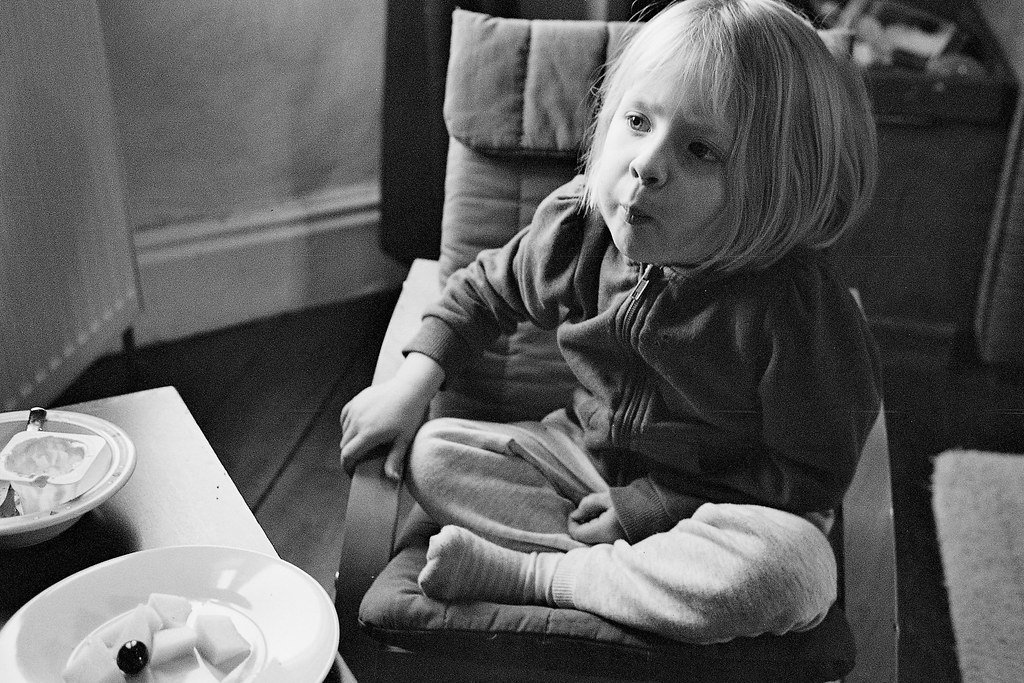
The funny thing is, setting the shutter speed first actually results in a required change of mentality too. If I’m shooting a portrait, more often than not it’s almost preset in my mind that I’m looking for a bit of subject separation. Instinct tells me to open up my lens, shoot with the biggest aperture as possible (within reason) and adjust the shutter speed to suit. It’s just not a practical shooting mentality with a zone focus camera, what’s practical with zone focus is to give yourself the best possible chance to get an in focus shot as possible, and stop down. 1/60th and f/4 is more likely to result in an in focus subject at a guessed 1m than 1/125 and 2.8. 5cm more likely in fact. The pre-setting of the shutter speed followed by blind setting of the aperture to attain correct exposure shifts the focus (excuse the pun) of the shot from subject background separation to simple subject focus.
The Rollei 35SE Review
That all said and out the way, there are a few other points of note about this camera that are worth a mention…
The viewfinder
The viewfinder of the Rollei 35SE is a very simple 0.6x magnification window to the world. It’s bright, it’s clear it contains little more than some frame lines and (in the case of the Rollei 35SE/TE) a few LEDs for the light meter. It’s easy to forget just how refreshing looking through a viewfinder with little or no distracting information on show. In fact, it having its LEDs in the viewfinder almost ruins the experience. Thankfully they don’t show up until half press of the button. I probably wouldn’t change it now though, especially since I’ve got so used to using it with a meter in the finder.
One small problem I’ve found with the finder – or at least a problem with me and not concentrating when using the finder at close distances – is that I forget to take note of the parallax correction lines and end up with photos framed like this:
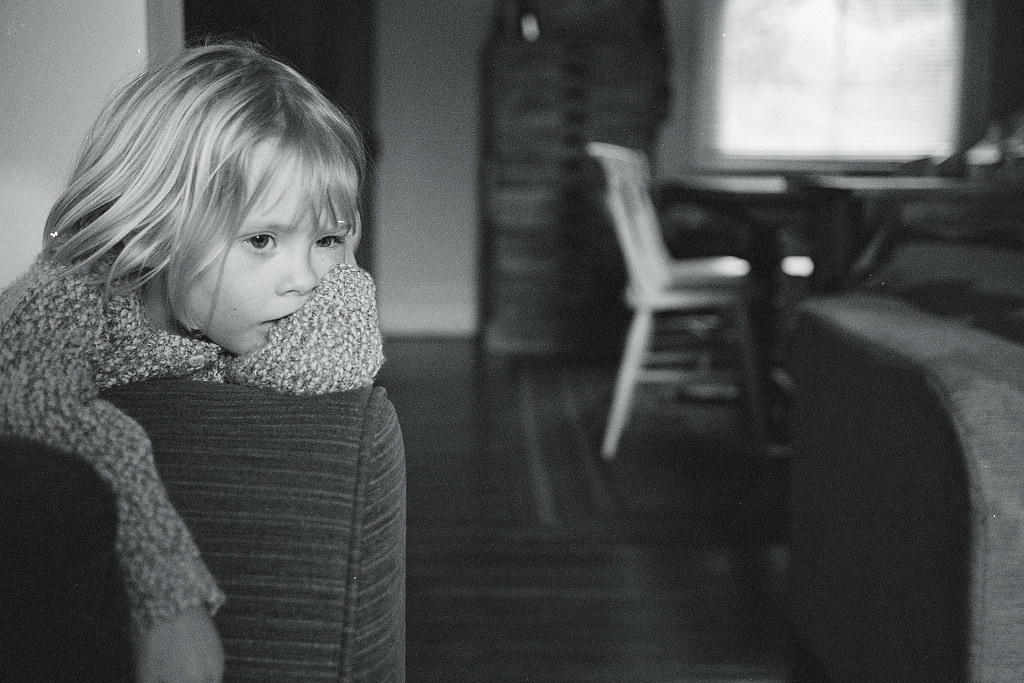
Fortunately I don’t actually like outcome… Sometimes serendipity steps in and holds your hand… But I must try harder to remember that when close focusing, I need to take note of the left hand parallax correction line as much as I do the top one.
It’s fully mechanical
Being fully mechanical, the battery can be removed and the camera used without the built in light meter. So if you do find it a distraction, or just want to use an external meter, then this is an option. It’s also lovely and quiet, making only a very subtle click when the shutter is fired. Being a leaf shutter it’s silence is also accompanied by a limited amount of vibration.
The light meter
As mentioned the light meter is a 3 LED based meter which displays a reading in the viewfinder. It’s main issue is its limited range, it fails to operate any lower than EV8 (100iso) and so is pretty useless indoors, especially in the evening. Again, this adds to the idea that actually it was mostly designed for outdoor shooting rather than anything much else. As you can see though, I’ve not let this stop me using it indoors in very low light; this shot was metered with my spot meter:
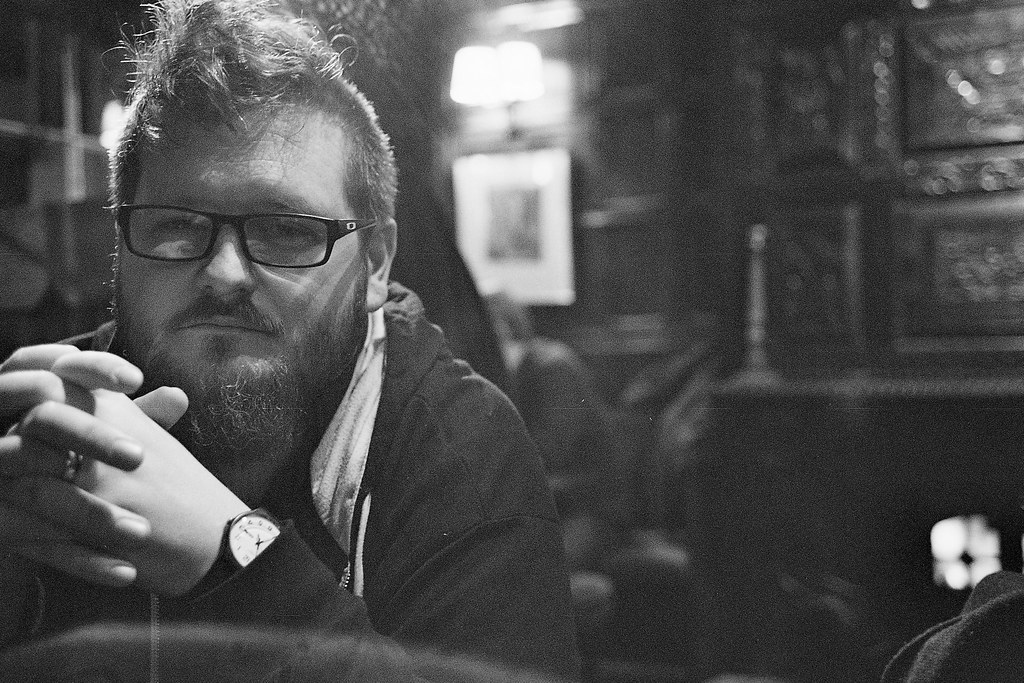
The other fairly major frustration is that there is no display of close-to-correct exposure. It’s either correct, and so the green LED lit, or not correct, and so one of the red LEDs lit. It would be nice if there was a close-to-correct indicated by both a red and a green LED lit.
The hot shoe is on the bottom and the battery compartment is on the top.
With a hot shoe on the bottom, to use a flash the camera must be held upside down so as to avoid the flash firing up at the subject. This isn’t particularly ideal, but would shoehorning it onto the top make it a better camera? For the amount I’m likely to use flash, personally I’d rather it stayed neatly on the bottom.
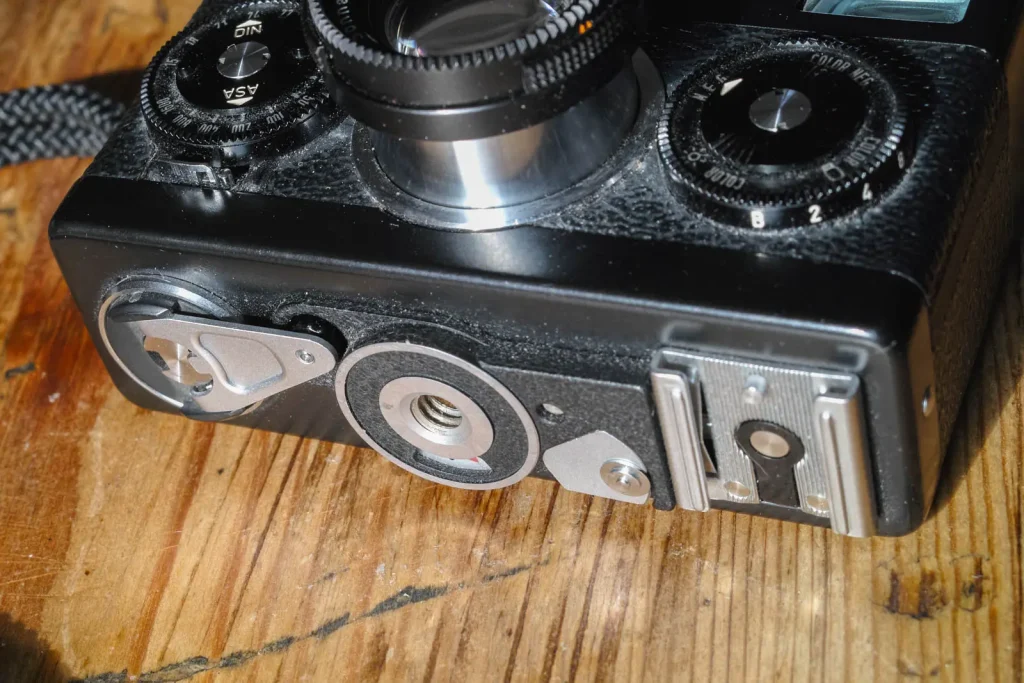
The reality is, it’s a small camera and these features have to go somewhere. The hot shoe, I will probably never use, but it does no harm on the bottom and is there for emergencies. I also prefer having the battery compartment where I can access it without having to open the back of the camera … That way I can pop it out if I fancy shooting with my spot meter.
The battery
The battery is an old 5.6v px27. My camera came with a little Minox adapter that converts 4×386 batteries to fit in the battery compartment. The issue is, 4 of these batteries puts out a voltage of 6v which is more than the required 5.6v. My previous experience of this is that the increased voltage means the resulting images are underexposed. For some reason, with the Rollei 35SE, this higher voltage means the shots come out overexposed. My first roll actually came out over exposed:
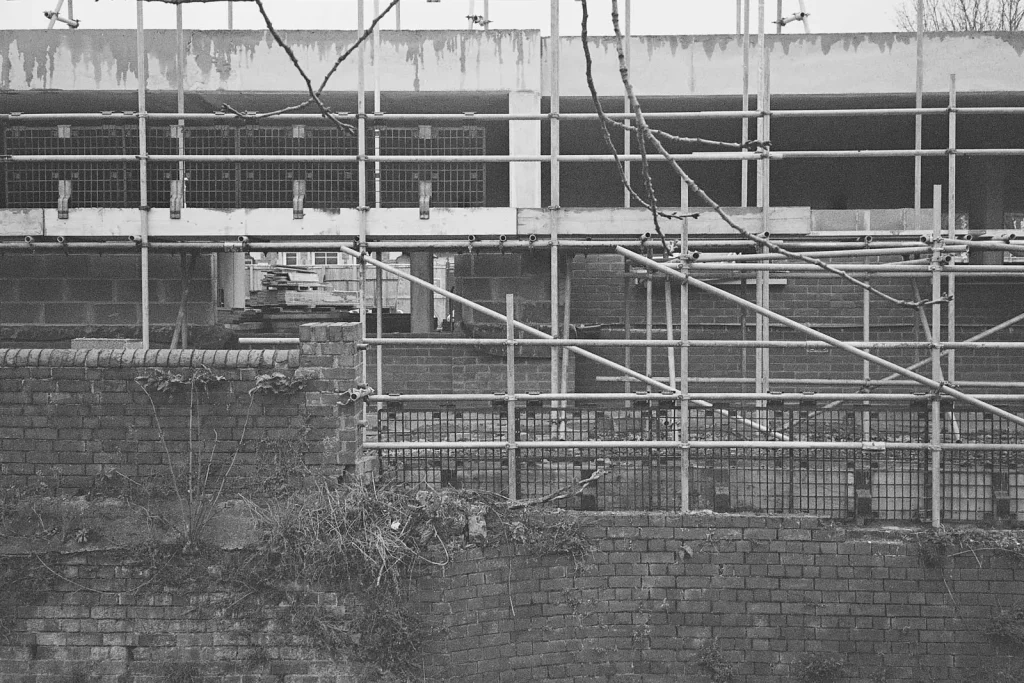
EDIT: Looking back at this article with greater experience, I can now see that the above image was in fact underexposed.
Though I would prefer this not to happen, the easy answer is to counteract the overexposure by setting the ISO a stop different. The more expensive answer is an other battery adapter like this one on the small battery company website.
Winding from the wrong side of the camera
Left hand winding is weird to start with, it just seems entirely counter intuitive. I got used to it in little time though.
A pain to load
I think, beyond its beguiling good looks, this was the first in-hand conclusion I came to. I couldn’t get the damn thing to load. Second time round it actually went ok, so I suppose it’s just a knack. Pushing the leader as far as it will go into the slot on the take up spool seems to be the trick.
Last but not least – the Sonnar Lens
Mechanically, it’s a collapsing lens which will only collapse after the shutter has been cocked. I’ve read, and had it mentioned that this is one of the reasons people find the camera fiddly. I couldn’t quite work this out. After shooting with the camera for a week or so, I’d not had a single incident where I’d felt the lens mechanism had caused me issue. It pulls out smoothly, locks into position with a slight click as it rotates into place. Then when you’ve finished shooting, a flick of the switch unlocks it and it pushes back into place. I found myself extending and contracting it numerous times whilst out without even thinking about it. In fact, I’ve only put my mind to the problem since it was mentioned to me on Twitter.
What I’ve concluded makes this action a fiddle, depends on habit of the individual photographer. Some photographers, myself included, habitually wind on the film after the shot. Some, my wife included, wind on the camera before the next shot. If you are in the latter camp, unfortunately you are going to find the Rollei’s lens to be annoying, as it won’t contract of prior to advancing the film/cocking the shutter. If you are in the former, well done, how weird are those pre-shot-cockers?! … And yeah, like me you won’t even notice a problem.
Of course mounted in this extending lens barrel are a series of pieces of glass, that when combined, create a 40mm 2.8 Sonnar lens with a pretty good reputation. My personal observations of its qualities seem to match the general consensus… I would agree that it is a pretty impressive lens. Though I must admit not not being instantly and completely taken aback by its quality, I’ve more come to recognise it gradually. This is I find sometimes the case with older lenses that lack quite the levels of contrast of modern glass. To be honest I sometimes think I’ve spoiled myself, as really I don’t always want that super-high contrast look, but when a lens lacks it, I’m often less impressed straight away. This is, as I say, I flaw with me and not with a lens.
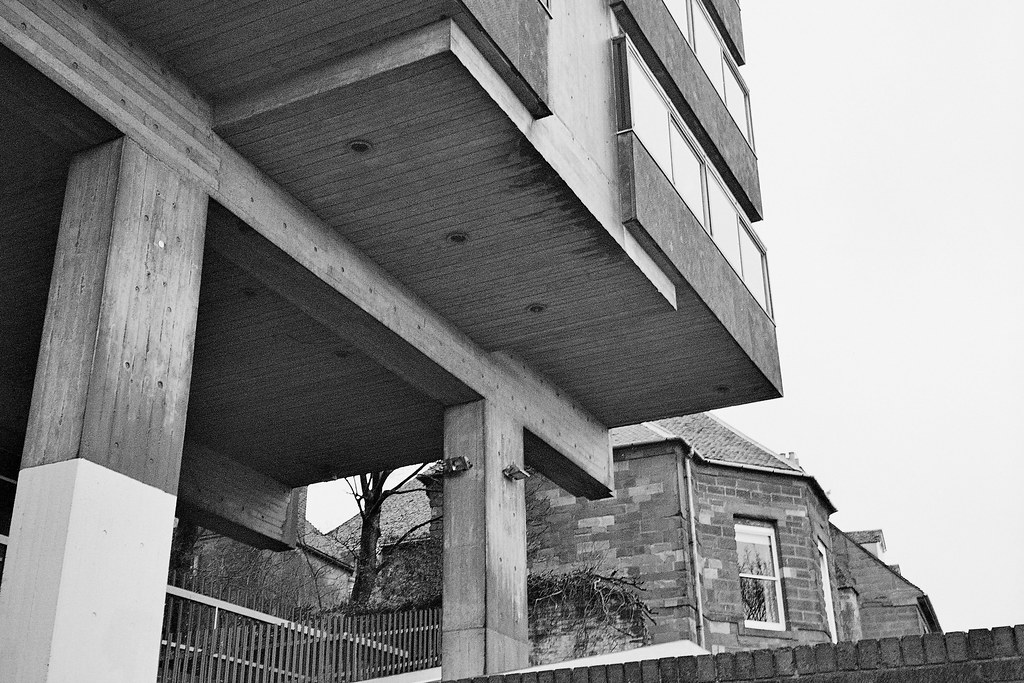
What this lens lacks in contrast it makes up for in resolution. Photos don’t necessarily appear bitingly sharp, but the detail is there if you choose to look closely enough. The resolution is there to define the details but they don’t appear as evident as they might with a modern piece of glass. As I say, it certainly isn’t a modern rendering lens, but to reiterate, this is definitely not a bad thing in my opinion.
Have a look closely at the photo over on flickr and you will see you can read some of the little sign in the foreground. With finer film, I’m sure this detail would be even more evident.
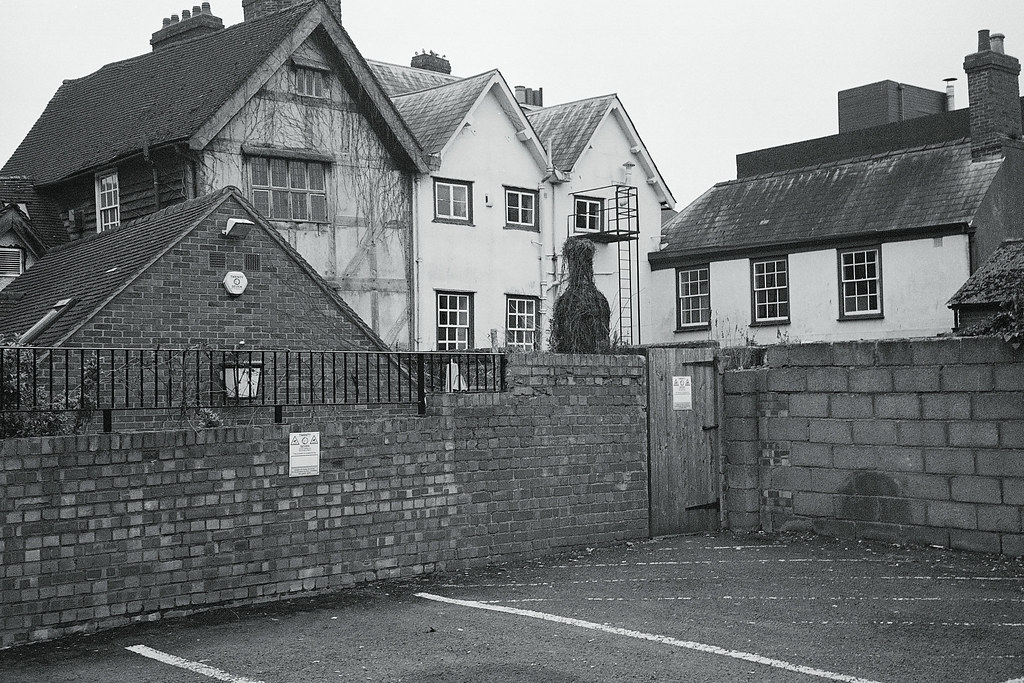
I can see little evidence of any distortions or indeed any vignetting in my shots so far, and there doesn’t seem to be any drastic decrease in quality when shooting wide open. Photos have a good overall contrast, they generally don’t appear veiled or washed out – at least without shooting toward the sun.
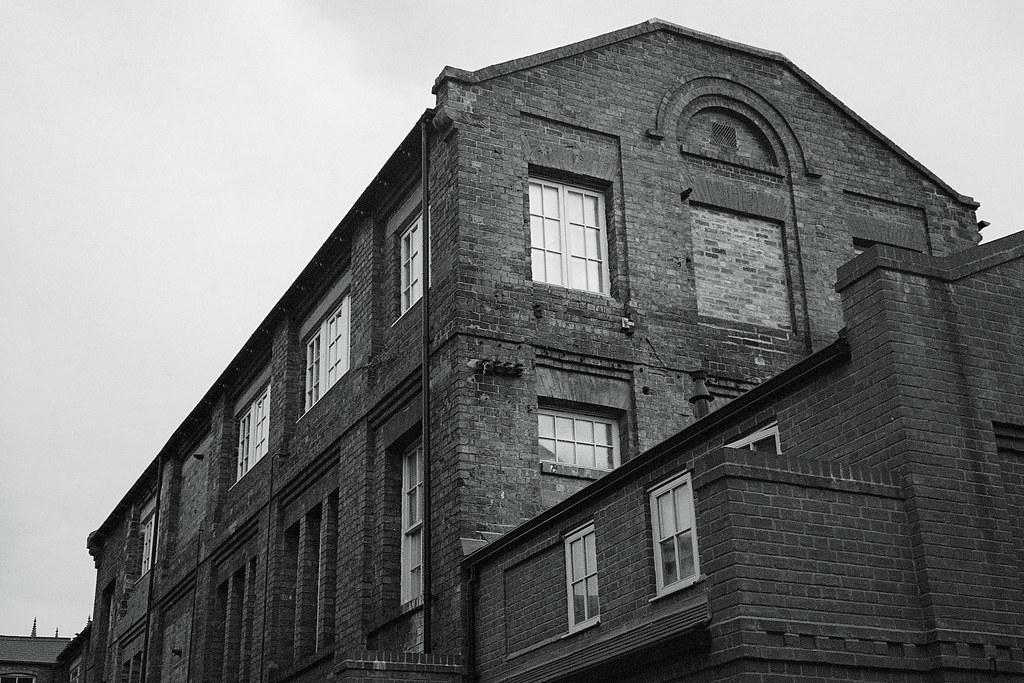
I did make the lens almost completely wash out a shot by having the sun just out of the frame though. I suspect the hood would help, if only I would remember to take it out.
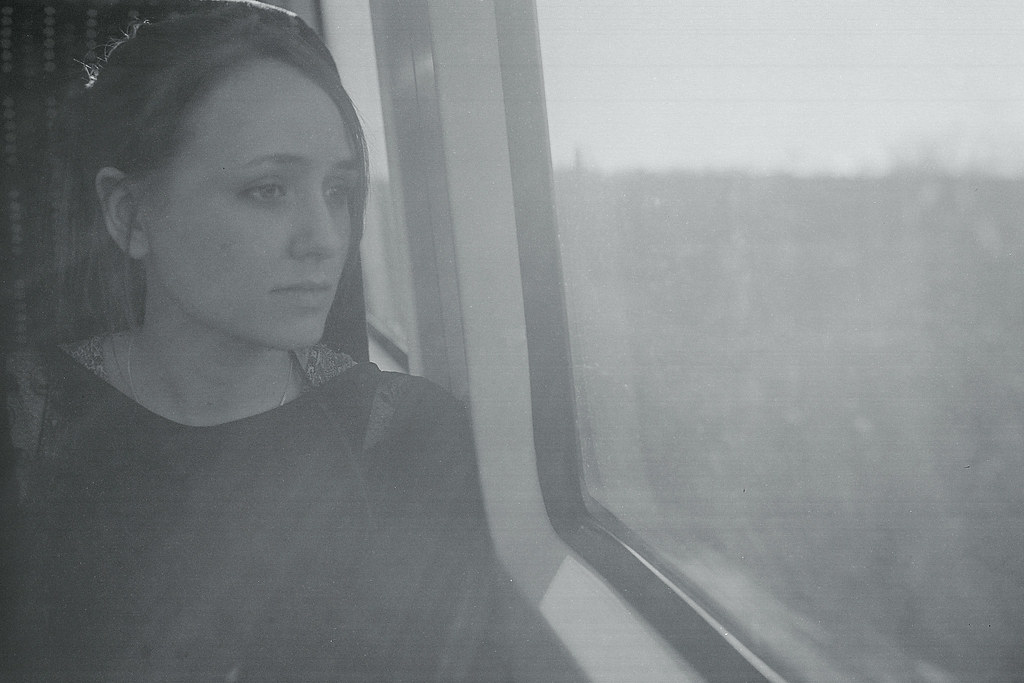
I’ve also found that pointing it at very high contrast scenes can sometimes result in a great deal of glow around the highly lit areas. I suspect this is down to inadequate coating/reflections within the lens.
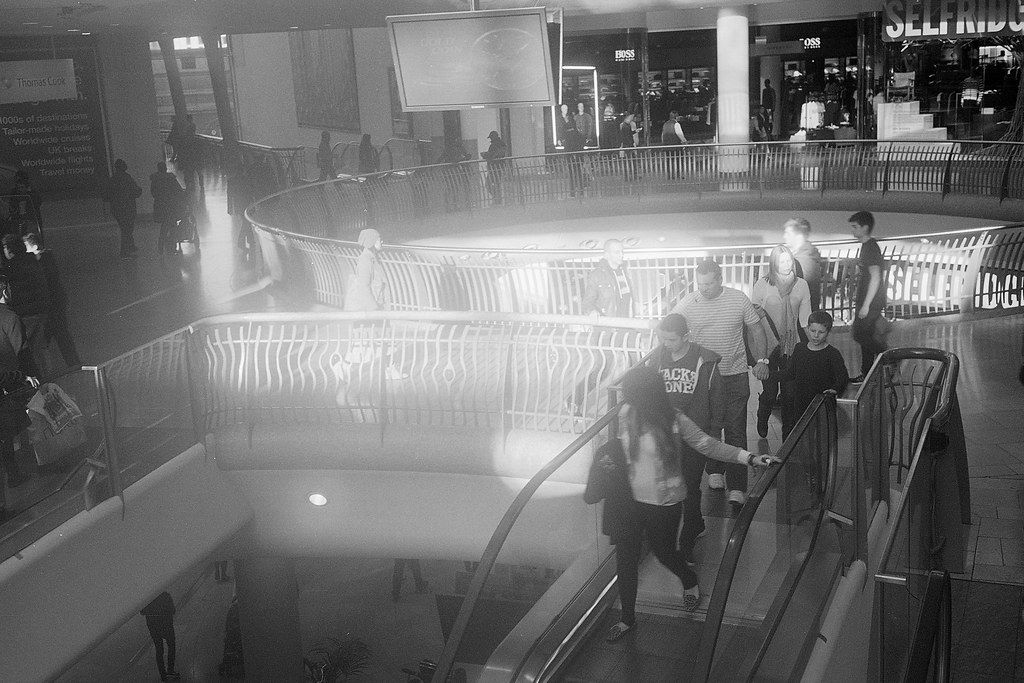
These later “issues” with the way it deals with the light will certainly cause concern to some. I on the the other hand find them endearing, I find them to be part of the lenses character that are better harnessed than complained about…
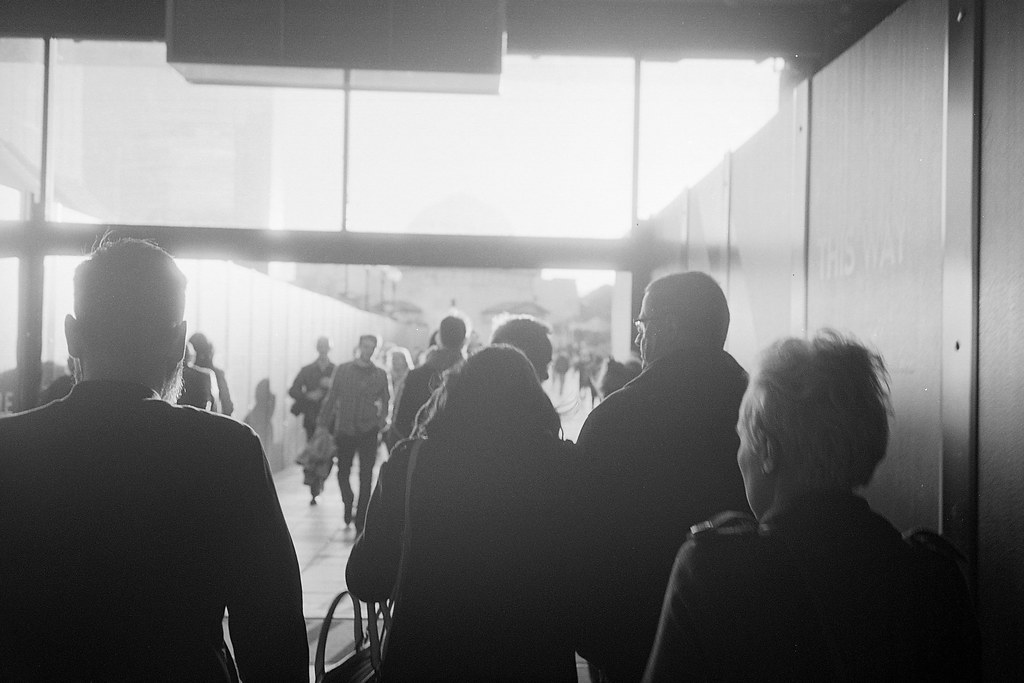
My concluding thoughts on the Rollei 35SE
I think the most important thing to remember is the fact that It really is nothing more than a zone focus camera. Trying to treat it or use it as anything else is not only a little futile, but will definitely result in the feeling that it’s difficult or fiddly to use. Used as a zone focus camera and it’s actually very easy to use indeed. Yes the controls are on the front of the camera and a little small, but the controls are also on the front of a Voigtlander Vito B, a camera that is infinitely more basic, actually slightly more of a fiddle to use, but rarely gets called as so.
I think the problem the Rollei faces is more down to a sort of expectation bias. It’s such a beautiful, compact, and fairly expensive little thing that the expectation of it is that it is going to be somehow something more than a simple zone focus camera. Or maybe that somehow it could have been more than a simple zone focus camera. Maybe that Rollei could have made it a rangefinder, or at very least, like the Petri 35 designed some sort of focus distance indicator in the viewfinder. For some, the lack of these features is, as I mentioned at the start of my post, a caveat, yet for others it seems irrelevant. I put this down to not just personal preference, but actually to personal perception. To see this camera as lacking, is to just not see it for what it is: a quite simple, quite elegant, very compact zone focus camera!
It might not be the fastest camera to change settings on, but take the shift in mentality required when shooting with a compact zone focus camera and the story is a little different. It’s all about mind set and preparation. Rather than set up shots on a shot by shot basis, there just needs to be a little more anticipation. People talk of these sorts of cameras slowing them down and making them think. For me the important bit is the thinking bit. Shooting a zone focus fully Manual camera is an mentally involving process, it means thinking about the shot before you even know what the shot is. In doing this, it doesn’t need to be a slower process, in fact at the moment of truth, actually that preparedness can make the shot come even quicker than with any other camera.
So I suppose to answer the question of whether or not I should have bought one sooner? Yes I think I should have… Should you buy one? Well, if you’re expecting or hoping for more than a zone focus camera, I wouldn’t bother. But, if you like a 35mm zone focus camera, I’m not sure I can think of a camera I would prefer I would prefer to the Rollei 35SE!
Cheers for reading
Hamish
Share this post:
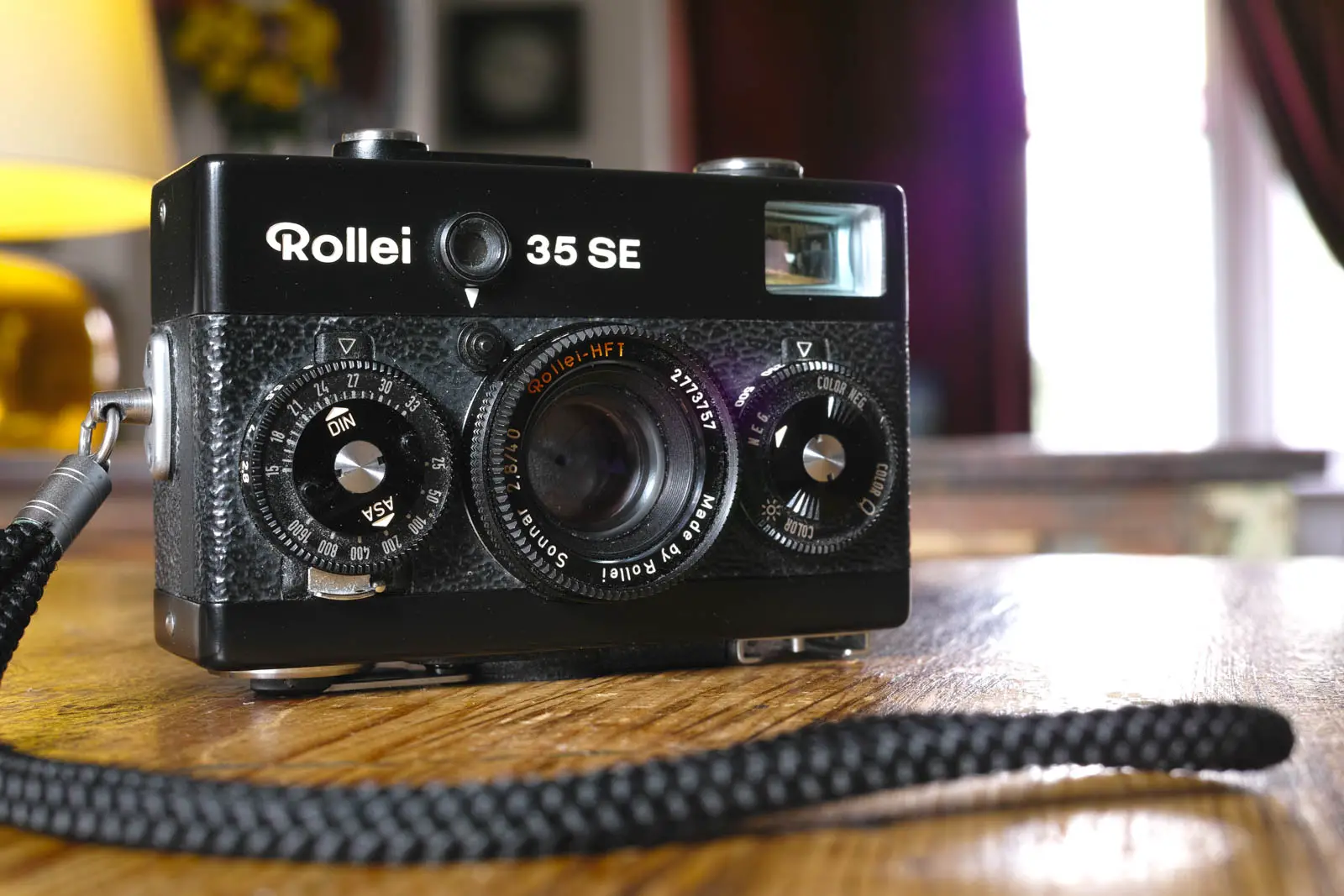








Comments
Rob on Rollei 35SE Review – and some wider thoughts about shooting a zone focus camera
Comment posted: 14/03/2015
Love the second shot of Connie!
Comment posted: 14/03/2015
Ray on Rollei 35SE Review – and some wider thoughts about shooting a zone focus camera
Comment posted: 15/03/2015
Comment posted: 15/03/2015
Matthew on Rollei 35SE Review – and some wider thoughts about shooting a zone focus camera
Comment posted: 15/03/2015
Comment posted: 15/03/2015
Comment posted: 15/03/2015
Comment posted: 15/03/2015
Review of the Rollei 35 TE » ray larose on Rollei 35SE Review – and some wider thoughts about shooting a zone focus camera
Comment posted: 01/06/2015
jeremy north on Rollei 35SE Review – and some wider thoughts about shooting a zone focus camera
Comment posted: 06/06/2015
My entry into the world of Rollei was in 1988 when a good friend of mine who had a camera shop in Droitwich said a customer had just traded in a B35. He knew I was after such a tiny camera so Kim let me have it for what he paid for it. A bargain if ever there was one.
In the late 70s I'd marvelled at these beautiful exotic machines and was thrilled to have one of my own. The image quality was so good even compared to the Yashica FR I'd used for years. Great camera the B35.
Then, ten years ago I got a 35SE which raised the game considerably. Image quality even better. Absolutely top notch. Also the heft of the thing. So solid.
It is a fiddly camera to use but that can be its strength. As you well describe, presetting is the way to use it. There's not many cameras which can teach a person to be photographers better than this. I think it is like LF photography in a strange way. I really like the rational way in which you present the EV scenarios. Ahh Geek out (to the tune of Chic's 70s hit haha)
I was thinking again about the controls layout. I wonder if it was the influence of their TLRs with the dials either side of the lens. Similar to other controls etc on these cameras, they were put where they had to be from an engineering perspective rather than for ergonomics. Even so it is more ergonomic than a Hasselblad V camera.
The glory of the S & SE though is that Sonnar lens. I too have read that for B&W the Tessar of the T and TE gives greater contrast, however, the Sonnar for colour is beautiful. It has a lovely golden glow to it. Some call it dreamy or retro. I just call it that Zeiss look. It has a warm tone and subtlety with no lack of contrast and detail.
Regarding the light meter battery thing it makes sense that it will under expose with a higher voltage as the meter will indicate good exposure with less light input. The latitude of neg film should overcome that though. Using a separate light meter is a good and bad thing. Good in that it makes it less of a fiddle to set the aperture and shutter before raising it to the eye; bad in that the light meter will be a lot bigger than the camera!!
I look forward to more of your reviews of such wonders of the world of film. If I may be so bold as to make a suggestion, have you ever used a Werra 3 ? If not then you really must. Wow factor indeed.
Comment posted: 06/06/2015
Comment posted: 06/06/2015
David Cuttler on Rollei 35SE Review – and some wider thoughts about shooting a zone focus camera
Comment posted: 30/08/2015
I shot B&W, Color negatives, and transparencys with it. I never considered it fiddly until I came across a Yashica T4 point & shoot. I even had it overhauled after shooting with it for 30 years. My previous favorite was a Retina 2A. I just love simple cameras, they are kind of liberating.
I am considering buying a rollie again, but would probably go with the SE to get the better light meter and faster lens, although the Schneider was very nice.
I picked up an Olympus 35RC about 10 years ago, fitted new light seals, and dropped it denting the top cover making it unusable. I found it a few weeks ago, went on Ebay, and picked up a parts camera for $4.95, and swapped the covers.
Its nice, but not a Rollie.
I enjoyed your review.
David
Comment posted: 30/08/2015
David Cuttler on Rollei 35SE Review – and some wider thoughts about shooting a zone focus camera
Comment posted: 04/09/2015
I contacted Oceanside Camera Repair who is considered the top repair facility for Rollei on the West Coast. I asked about repairs on tge Rollei 35SE, and Harry suggested going with the 35S, because if the meter on the 35SE needs parts, they no longer exist. The meter parts for the 35S are available.
I think I will be looking for a 35S.
David
Comment posted: 04/09/2015
TerryB on Rollei 35SE Review – and some wider thoughts about shooting a zone focus camera
Comment posted: 26/03/2016
The Sonnar design is superior with 5 elements anyway, but being unit focusing and not front cell like the Tessar greatly improves it. It will be interesting to compare this version of the Sonnar to my Opton f1,5/50mm that I used on my Contax IIa and IIIa.
Your user review has been enlightening, but can you tell me which scanner you use, as the images look pretty good on screen?
Comment posted: 26/03/2016
Comment posted: 26/03/2016
Brad Maestas on Rollei 35SE Review – and some wider thoughts about shooting a zone focus camera
Comment posted: 06/04/2016
Comment posted: 06/04/2016
Andrew on Rollei 35SE Review – and some wider thoughts about shooting a zone focus camera
Comment posted: 29/09/2016
Comment posted: 29/09/2016
Andrew on Rollei 35SE Review – and some wider thoughts about shooting a zone focus camera
Comment posted: 30/09/2016
Comment posted: 30/09/2016
Kodachromeguy on Rollei 35SE Review – and some wider thoughts about shooting a zone focus camera
Comment posted: 04/11/2016
Comment posted: 04/11/2016
Chris R on Rollei 35SE Review – and some wider thoughts about shooting a zone focus camera
Comment posted: 28/02/2017
Comment posted: 28/02/2017
Randall Stewart on Rollei 35SE Review – and some wider thoughts about shooting a zone focus camera
Comment posted: 11/05/2018
Battery: Voltage adjustment to compensate for use of 6 volt battery in the 5.6 volt camera meter systems is an issue with the mechanical meters in all 35, 35T, and 35S models, however it is a non-issue in the SE and TE. The LED meter readout system in the SE/TE requires the these models incorporate the internal voltage regulation not used in the prior models. Thus all you need to do it get a 6 volt battery or pack totaling about the same which fits into the battery compartment. The camera system will automatically adjust the voltage down to whatever is needed. No workarouind, like film speed reset or electrical modification of the battery, is required. Comments by our author to the contrary are technically wrong, notwithstanding his claim of overexpsoure with use of 6 volt battery.
Comment posted: 11/05/2018
The Contax T - My Final Word in Pocket Cameras - by Hern Tan - 35mmc on Rollei 35SE Review – and some wider thoughts about shooting a zone focus camera
Comment posted: 21/06/2018
The Agfa 1035 and a Confusion of my Preferences - 35mmc on Rollei 35SE Review – and some wider thoughts about shooting a zone focus camera
Comment posted: 04/11/2018
Lili Elrod on Rollei 35SE Review – and some wider thoughts about shooting a zone focus camera
Comment posted: 09/12/2019
I just got a perfect 35 LED (I know the low-end version) and will apply your suggestions to using it.
Comment posted: 09/12/2019
Claude-Marie on Rollei 35SE Review – and some wider thoughts about shooting a zone focus camera
Comment posted: 10/03/2020
Thank you for this interesting text.
I bought my Rollei 35SE in 1980; it has followed me everywhere since then. It has known the sands of Africa, the humidity of Indonesia, the islands and many other countries.
It has survived my falls in the snows of the Alps, the rain and the dust... It's still there and I still use it for the pleasure of black and white.
Wonderful camera that has never disappointed me: a camera for photographers!
In the 2000s, I had a minor problem with slow speeds but fixed (cleaning).
I never really felt the lack of automatism: you photograph differently with a 35SE and what's amazing is that reflexes and automatisms come back instantly when you switch from a very sophisticated camera to this jewel...
The battery: I'm amazed by what I read; the LED light meter of the 35SE is an electronic system that uses a differential amplifier. (piece can be found on ebay !)
It is independent of the battery voltage as long as this voltage is not too low and is therefore below the minimum to work. I had the opportunity to make comparative tests without any difference.